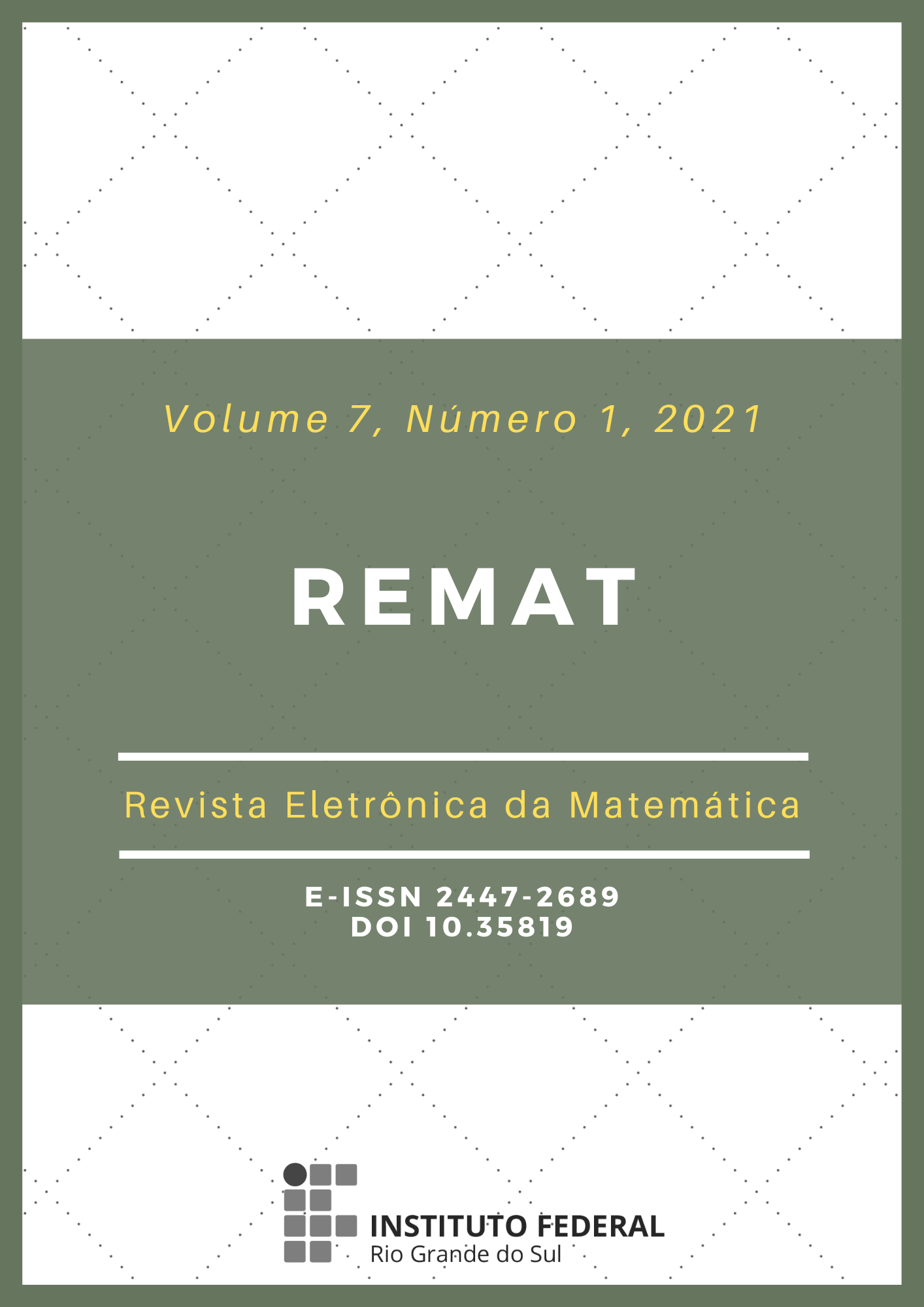Application of Direct Integration Methods in the solution of a nonlinear beam problem
DOI:
https://doi.org/10.35819/remat2021v7i1id4277Palabras clave:
Numerical Methods, Finite Element Method, Mode SuperpositionResumen
This work applies different numerical methods involved in the solution of a nonlinear clamped beam problem. The methodology used in the discretization of the dynamic problem is based on the Finite Element Method (FEM), followed by mode superposition, where a localized nonlinearity is applied at the free end of the beam. The solution of the nonlinear problem is performed by five different integration methods. The solution code is implemented in FORTRAN language, validated with ANSYS and the dynamic response and the graphs are obtained with the help of MATLAB software. The work shows the convergence of the implemented methods with various validation problems.
Descargas
Referencias
ADHIKARI, S. Damping Models for Structural Vibration. Cambridge: Cambridge University, 2000.
BATHE, K. J. Finite Element Procedures. 2. ed. Pearson Education: United States, 2014.
BELHAQ, M.; BICHRI, A.; DER HOGAPIAN, J.; MAHFOUD, J. Effect of electromagnetic actuations on the dynamics of a harmonically excited cantilever beam. International Journal of Non-Linear Mechanics, v. 46, n. 6, p. 828-833, jul. 2011. DOI: https://doi.org/10.1016/j.ijnonlinmec.2011.03.001.
BORINO, G.; MUSCOLINO, G. Mode-superposition methods in dynamic analysis of classically and non-classically damped linear systems. Earthquake Engineering Structural Dynamics, v. 14, p. 705-717, set./out. 1986. DOI: https://doi.org/10.1002/eqe.4290140503.
CHANG, Shuenn Yih. Studies of newmark method for solving nonlinear systems: (I) Basic analysis. Journal of the Chinese Institute of Engineers, v. 27, n. 5, p. 651-662, 2004. DOI: https://doi.org/10.1080/02533839.2004.9670913.
HUTTON, D. Fundamentals of Finite Element Analysis. 1. ed. United States: The McGraw-Hill Companies, 2004.
KHAN, M. S.; KANEEZ, H. Nonlinear Vibration Analysis of Euler-Bernoulli Beams by Using Continuous Galerkin-Petrov Time-Discretization Method. Latin Americal Journal of Solids and Structures, v. 14, n. 9, p. 1695-1709, set. 2017. DOI: https://doi.org/10.1590/1679-78253327.
REMANI, C. Numerical Methods for Solving Systems of Nonlinear Equations. Thunder Bay: Lakehead University, 2013.
REZAIEE-PAJAND, M.; KARIMI-RAD, M. An Accurate Predictor-corrector Time Integration Method for Structural Dynamics. International Journal of Steel Structures, v. 17, p. 1033-1047, 30 set. 2017. DOI: https://doi.org/10.1007/s13296-017-9014-9.
STROGATZ, S. H. Nonlinear Dynamics and Chaos With Applications to Physics, Biology, Chemistry, and Engineering. 2. ed. Boca Raton (US): CRC Press Taylor and Francis Group, 2018.
TOLEDO, R. C. P. L. Um estudo sobre métodos de integração direta para a análise dinâmica não-linear de estruturas. Orientador: Nelson Francisco Favilla Ebecken. 96 p. 1983. Tese (Mestrado em Engenharia Civil) -- Programa de Pós-Graduação em Engenharia Civil, Universidade Federal do Rio de Janeiro, Rio de Janeiro, 1983. Disponível em: http://hdl.handle.net/11422/3384. Acesso em: 18 dez. 2020.
TSAI, S. Y. Numerical computation for nonlinear beam problem. National Sun Yat-sen University, Taiwan, jul. 2005. Disponível em: https://etd.lis.nsysu.edu.tw/ETD-db/ETD-search/getfile?URN=etd-0704105-220532&filename=etd-0704105-220532.pdf. Acesso em: 18 dez. 2020.
VIEIRA, L. C. L. M. Estudo de algoritmos de integração elemento por elemento para análise dinâmica não linear de estruturas. Orientador: Adeildo Soares Ramos Júnior. 2004. 121 f. Dissertação (Mestrado em Estruturas) - Universidade Federal de Alagoas, Maceió, 2004. Disponível em: http://www.repositorio.ufal.br/handle/riufal/383. Acesso em: 18 dez. 2020.
YUAN, Ya-Xiang. Recent advances in numerical methods for nonlinear equations and nonlinear least squares. Numerical Algebra, Control and Optimization, v. 1, n. 1, p. 15-34, 2011. DOI: http://dx.doi.org/10.3934/naco.2011.1.15.
Descargas
Publicado
Número
Sección
Licencia
Derechos de autor 2021 REMAT: Revista Eletrônica da Matemática

Esta obra está bajo una licencia internacional Creative Commons Atribución 4.0.
REMAT conserva los derechos de autor de los artículos publicados, teniendo derecho a la primera publicación del trabajo, mención de la primera publicación en la revista en otros medios publicados y distribución de partes o del trabajo en su conjunto con el fin de promover la revista.
Esta es una revista de acceso abierto, lo que significa que todo el contenido está disponible de forma gratuita, sin costo para el usuario o su institución. Los usuarios pueden leer, descargar, copiar, distribuir, imprimir, buscar o vincular los textos completos de los artículos, o utilizarlos para cualquier otro propósito legal, sin solicitar permiso previo a la revista o al autor. Esta declaración está de acuerdo con la definición de BOAI de acceso abierto.













 https://orcid.org/0000-0002-0893-7426
https://orcid.org/0000-0002-0893-7426


















